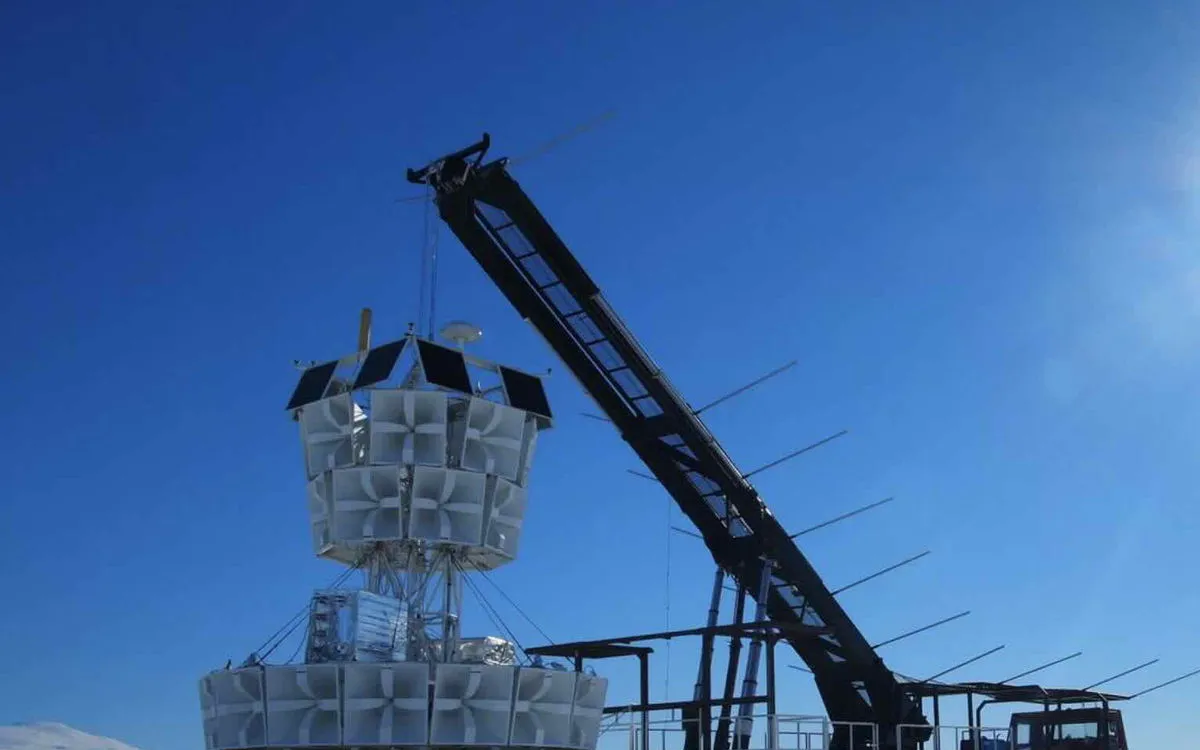
Penn State scientists have embarked on a groundbreaking research project utilizing balloon-mounted cosmic particle detectors to analyze radio waves from cosmic rays in the remote and frigid expanse of Antarctica. Recent findings from this endeavor revealed the anomalous detection of strange radio pulses that appear to originate from beneath the ice. A statement issued by the research team indicates that these “bizarre signals” challenge the existing frameworks of particle physics and could potentially indicate the existence of previously undiscovered particles or interactions.
The research team, led by associate professor of physics, astronomy, and astrophysics, Stephanie Wissel, expressed their excitement at detecting pulses that seemingly originated from beneath the Antarctic ice. However, they emphasized that this discovery was an unexpected bonus while they were primarily focused on an experiment aimed at detecting neutrinos. Neutrinos are elusive subatomic particles, known for having no electrical charge and being the lightest of all known particles. Typically, they are emitted by extremely high-energy phenomena such as stars and supernovae, yet they rarely interact with other matter, making them notoriously difficult to detect.
“You have a billion neutrinos passing through your thumbnail at any moment, but neutrinos don’t really interact,” Wissel explained, highlighting the challenges faced by researchers in this field. Several experiments, including the Antarctic Impulsive Transient Antenna (ANITA), have been deployed in remote locations to minimize interference and enhance detection capabilities of neutrinos. Unlike traditional detectors that operate underground or in isolated labs, ANITA employs balloon-mounted particle detectors to identify “ice showers” resulting from neutrino interactions.
“We have these radio antennas on a balloon that flies 40 kilometers above the ice in Antarctica,” Wissel remarked. “We point our antennas down at the ice and look for neutrinos that interact in the ice, producing radio emissions that we can then sense on our detectors.” During their observational sweeps, the team recorded a series of radio pulses. However, contrary to their expectations of detecting neutrino interactions, they encountered perplexing radio pulses originating from a completely different direction.
“The radio waves that we detected were at really steep angles, like 30 degrees below the surface of the ice,” Wissel noted, emphasizing the unusual nature of the findings. After confirming the anomalous detections, the team conducted extensive calculations to determine the origin of these signals. According to their assessments, the signals would have had to traverse and interact with thousands of kilometers of solid rock before reaching the ANITA detectors. If this is accurate, the rock should have absorbed the signals, rendering them undetectable.
The research team meticulously compared their ANITA readings with mathematical models and simulations of standard cosmic rays and other upward-going air showers. This rigorous analysis helped them filter out background noise and eliminate known signal sources, leading them to conclude that the detected signals were “most likely not representing neutrinos.” Furthermore, the team cross-referenced these strange signals with findings from independent projects like the IceCube Experiment and the Pierre Auger Observatory, which revealed no similar events. This lack of correlation prompted the researchers to classify the signals as truly “anomalous.”
“My guess is that some interesting radio propagation effect occurs near ice and also near the horizon that I don’t fully understand, but we certainly explored several of those, and we haven’t been able to find any of those yet either,” Wissel stated. This ongoing mystery remains at the forefront of their research efforts.
Given that these strange radio pulses do not conform to the standard model of particle physics, several alternative explanations are being considered. One hypothesis suggests that the team might be detecting evidence of dark matter, while another posits the possibility of an entirely new type of particle or particle interaction. Wissel indicated that follow-up observations from the Auger and IceCube projects may help refine the potential explanations.
Excitingly, her team is in the process of constructing a new, larger, and more sensitive detector known as PUEO. Once operational, PUEO is expected to enhance their detection capabilities and provide further insights into the mysterious detections. “I’m excited that when we fly PUEO, we’ll have better sensitivity,” Wissel expressed. “In principle, we should pick up more anomalies, and maybe we’ll actually understand what they are.” She added, “We also might detect neutrinos, which would in some ways be a lot more exciting.”